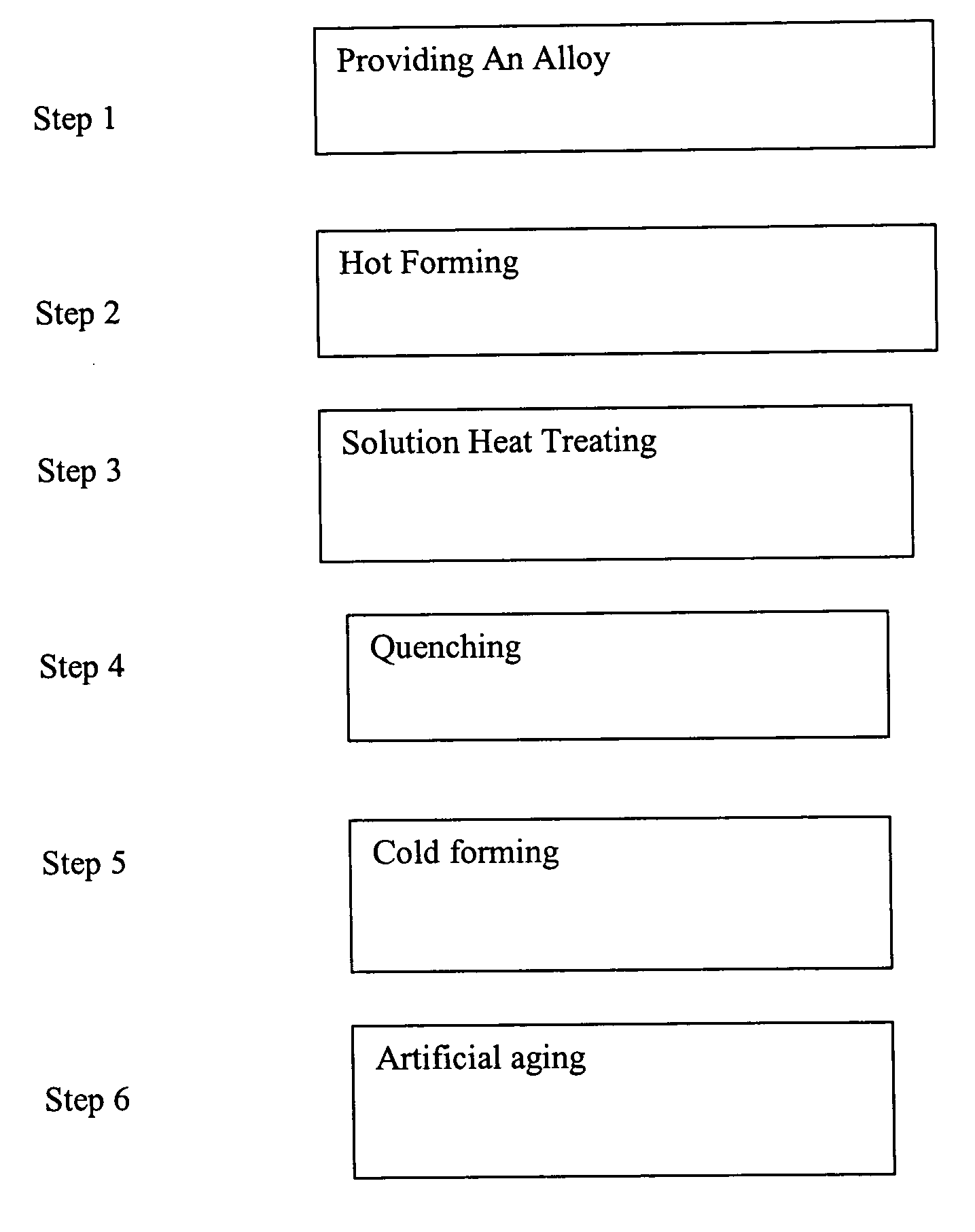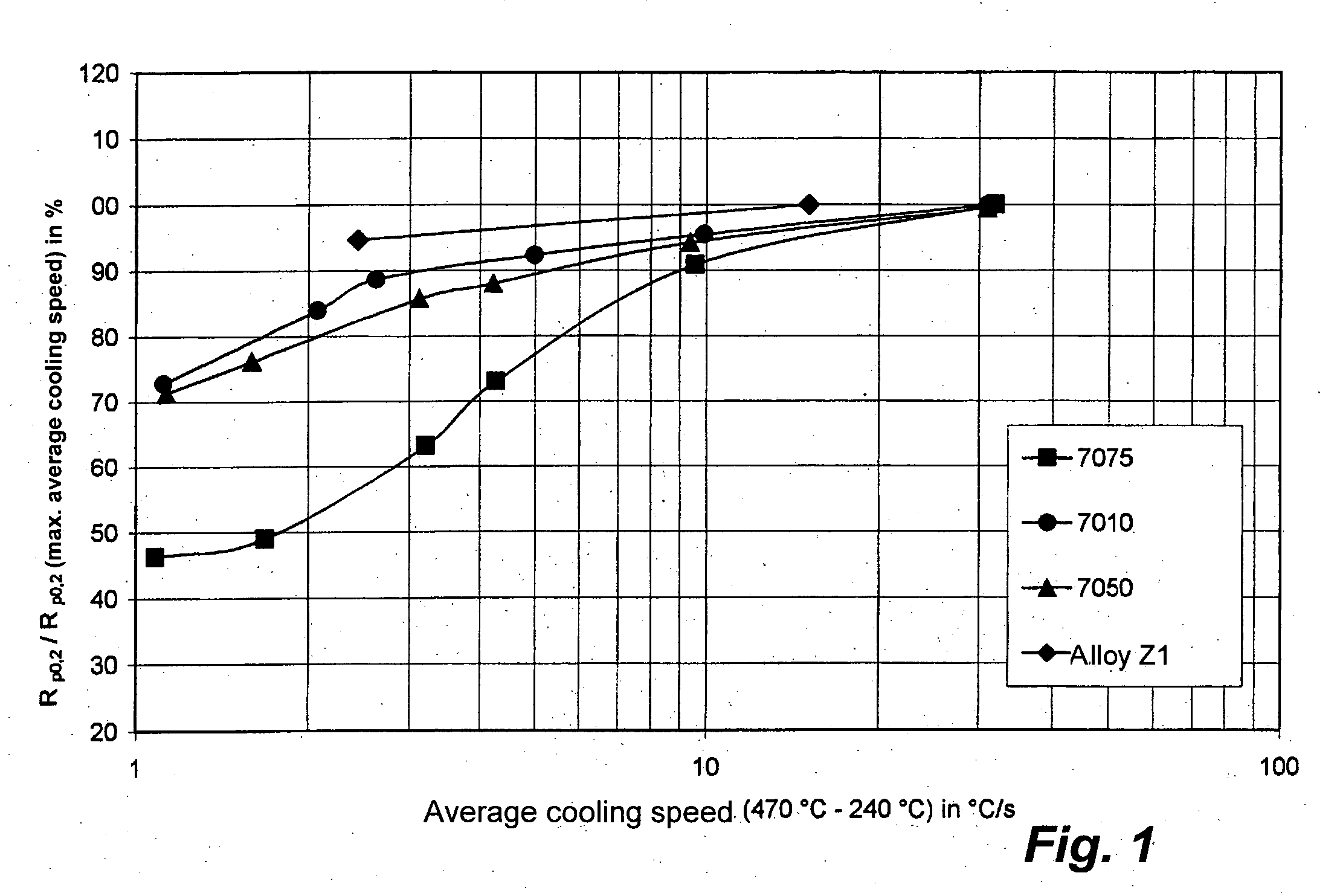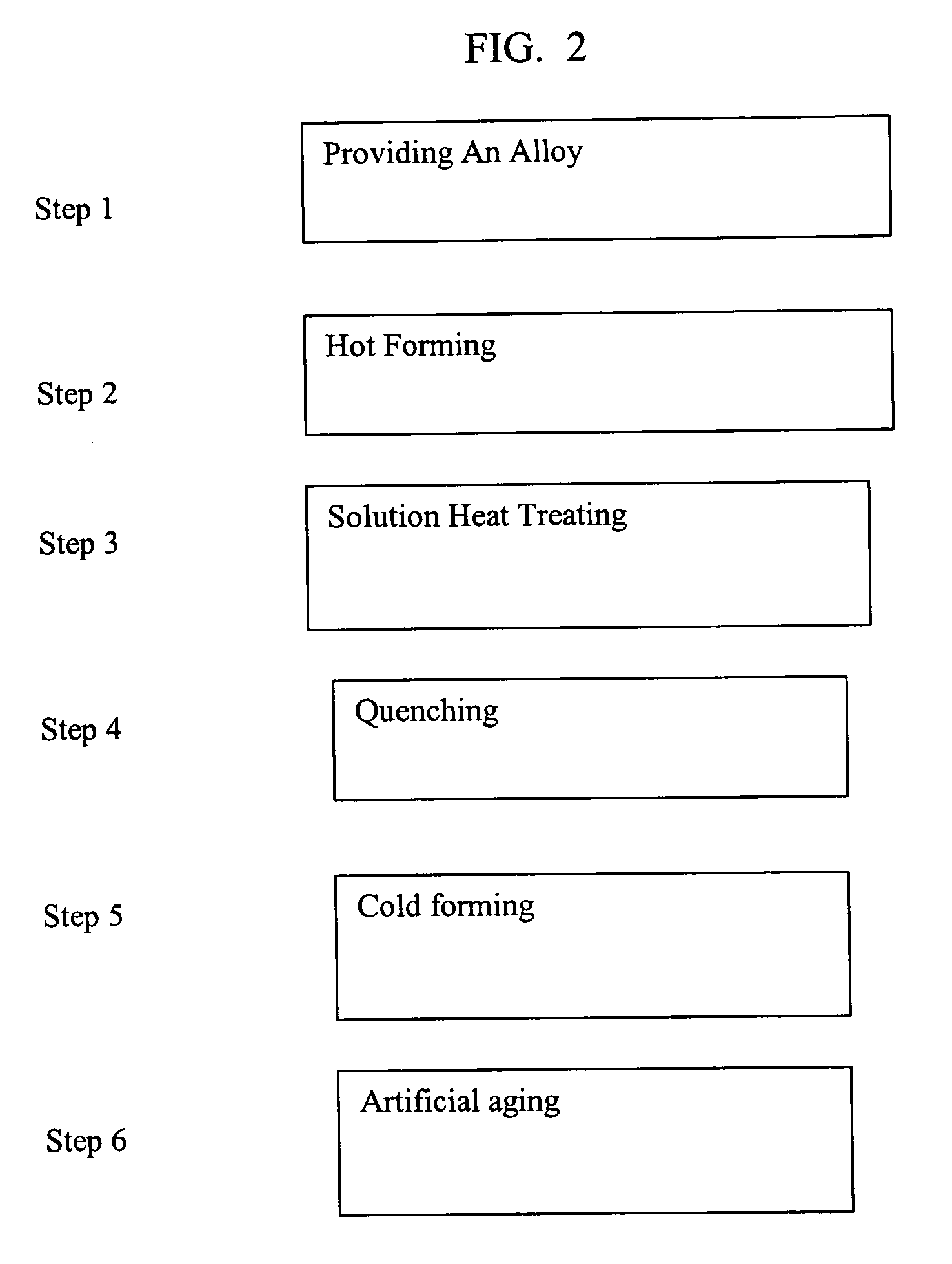Aluminum alloy that is not sensitive to quenching, as well as method for the production of a semi-finished product therefrom
a technology of aluminum alloy and quenching, applied in the field of aluminum alloy, can solve the problems of achieving uniform high degree of quenching with great effort and expense, and achieve the effect of reducing inherent stresses
- Summary
- Abstract
- Description
- Claims
- Application Information
AI Technical Summary
Benefits of technology
Problems solved by technology
Method used
Image
Examples
example 1
[0038] After the casting skin of the blocks produced in this manner had been lathed off, the homogenized blocks were pre-heated to 370° C. and formed multiple times to produce free-form forged pieces having a thickness of 250 mm and to a width of 500 mm.
[0039] Subsequently, the free-form forged pieces of alloy Z1 and Z2 were solution heat treated at 485° C. for at least 4 hours, quenched in water at room temperature, and subsequently artificially aged between 100° C. and 160° C., wherein the artificial aging was carried out in two stages. In the first stage, the semi-finished product was heated to more than 100° C. and held at this temperature for more than eight hours. The second stage, which was carried out immediately after the first stage, took place at a temperature of more than 130° C. for more than five hours.
[0040] Drawing samples were taken from the artificially aged free-form forged pieces, on which the strength properties at room temperature were determined in the sampl...
example 2
[0046] In another series of experiments, free-form forged pieces having a thickness of 150 mm and a width of 500 mm were produced from alloy Z1 and, after solution heat treatment, were quenched in water or a water / glycol mixture with approximately 20% and approximately 40%, respectively, and warm settled as described above. One forged piece was additionally cold upset after being quenched in water. The influence of the various cooling media was determined on drawn samples that were taken from the forged pieces in the directions “long” (L), “long-transverse” (LT), and “short-transverse” (ST). The average strength properties of the alloy for a thickness of 150 mm for various cooling treatments are shown as follows:
QuenchingRp0.2RmA5MediumStress Direction(MPa)(MPa)(%)Water(RT)L55157310.3LT5155447.5ST5055498.0Water (RT) +L49153712.8Cold upsettingLT4655208.7ST4305138.5Water / GlycolL54556612.5(16-20%)LT5205477.2ST5125488.3Water / GlycolL50352912.2(38-40%)LT4935255.0ST4875265.6
[0047] The re...
example 3
[0050] To determine the strength properties, the alloy Z1 was also cast in another example, analogous to the first example, and blocks for extrusion were produced.
[0051] After the casting skin had been lathed off, the homogenized blocks were pre-heated to over 370° C. and pressed into extrusion profiles having a rectangular cross-section, with a thickness of 40 mm and a width of 100 mm.
[0052] Subsequently, the profiles were solution heat treated for at least 4 hours at 485° C., quenched in water at room temperature, and subsequently artificially aged between 100° C. and 160° C., in two stages (first stage: >100° C., >8 h; second stage: >130° C., >5 h).
[0053] Drawn samples were taken from the artificially aged extrusion profiles, on which the strength properties were determined at room temperature, in the sample positions “long” (L), “long-transverse” (LT), and “short-transverse” (ST). The average strength properties of the alloy Z1 for an extruded rectangular profile (40×100 mm) ...
PUM
| Property | Measurement | Unit |
|---|---|---|
| temperature | aaaaa | aaaaa |
| temperature | aaaaa | aaaaa |
| temperature | aaaaa | aaaaa |
Abstract
Description
Claims
Application Information
 Login to View More
Login to View More - R&D
- Intellectual Property
- Life Sciences
- Materials
- Tech Scout
- Unparalleled Data Quality
- Higher Quality Content
- 60% Fewer Hallucinations
Browse by: Latest US Patents, China's latest patents, Technical Efficacy Thesaurus, Application Domain, Technology Topic, Popular Technical Reports.
© 2025 PatSnap. All rights reserved.Legal|Privacy policy|Modern Slavery Act Transparency Statement|Sitemap|About US| Contact US: help@patsnap.com



